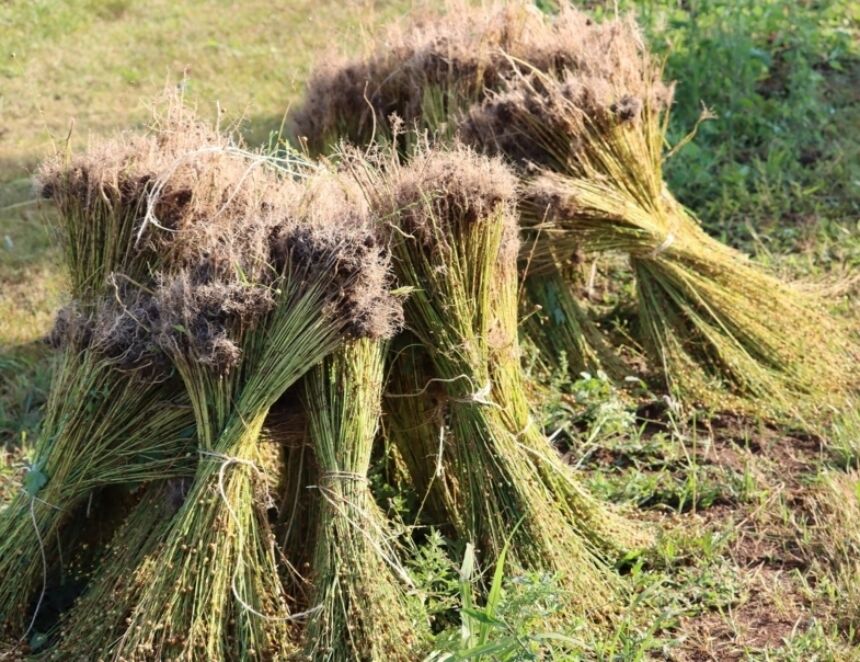August 04, 2023
Learn about flax's role in the history of art at Ag Progress Days

What do flax, art history and agriculture have in common? The public can find out during Ag Progress Days, when the Center for Virtual/Material Studies (CV/MS) will exhibit materials about the relevance of flax and flax processing in the history of art outside the entrance to the Pasto Agricultural Museum. Ag Progress Days takes place August 8–10 at the Russell E. Larson Agricultural Research Center at Rock Springs, located nine miles southwest of State College on Route 45.
CV/MS, housed in the Department of Art History in the College of Arts and Architecture, supports research in both technical and digital art history with the aim of fostering synthetic, collaborative scholarship across these fields. The center's theme for 2022–24 is “Fabrication: Virtual and Material Approaches to Global Textiles.”
At Ag Progress Days, hands-on exhibits related to flax will be on display, including tutorials on optical microscopy for fiber identification and examples of linseed oil and linen canvases. Members of the public (as numbers allow) will be invited to help process some of the flax that the CV/MS grew at the Arboretum at Penn State last summer. The tools used to process the flax were built by Doing Good with Wood, an educational non-profit corporation that brings people together to learn design, woodworking and “making.” More information about the center's flax initiative is available on this dedicated flax website. CV/MS Director Sarah Rich shared her enthusiasm about the event: “We are very grateful to the Pasto Agricultural Museum for giving us this opportunity to interact with Ag Progress Days exhibitors and visitors. Art making has relied on the skills of farmers and ranchers for millennia, so understanding much of art's history requires an understanding of agriculture."
"We are eager to share what we've learned and hope to gain new inspiration for future research.” – Sarah Rich
According to Rich, most scholars agree that flax and other bast fibers were the first fibers to be worked into textiles by human beings, with early evidence dating back to the paleolithic era. Flax-derived linen has been essential for cultural objects like tapestries, architectural banners, furniture covering and clothing. The history of oil painting would be unthinkable without flax, as canvases have traditionally been made of linen and pigments are typically suspended in linseed oil. The tools and labor involved in flax processing have long fascinated artists; images of flax crops, along with representations of people braking, heckling and spinning flax, have appeared in Egyptian tomb painting, medieval manuscripts, renaissance tapestries and post-impressionist painting.
Ag Progress Days hours are August 8, 9 a.m.–5p.m.; August 9, 9 a.m.–7 p.m.; and August 10, 9 a.m.–4 p.m. Admission and parking are free. Visit https://agsci.psu.edu/apd for more information.